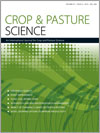CP16056Recent changes in southern Australian frost occurrence: implications for wheat production risk
Although Australia’s mean surface air temperatures, daytime maximum temperatures and overnight minimum temperatures have warmed, there has, somewhat paradoxically, been an increase in frost risk across much of southern Australia. Recent regional and localised changes in the frequency, timing and duration of minimum temperature extremes all show increasing risk. Over the last six decades, more frost events and longer frost season length have contributed to an increase in the potential for frost-related crop losses. This paper examines and quantifies the extent of the production risk changes for 65 sites across the Australian wheatbelt and shows how managing frost risk has become more challenging over the last two decades and will potentially remain so in the near future.




